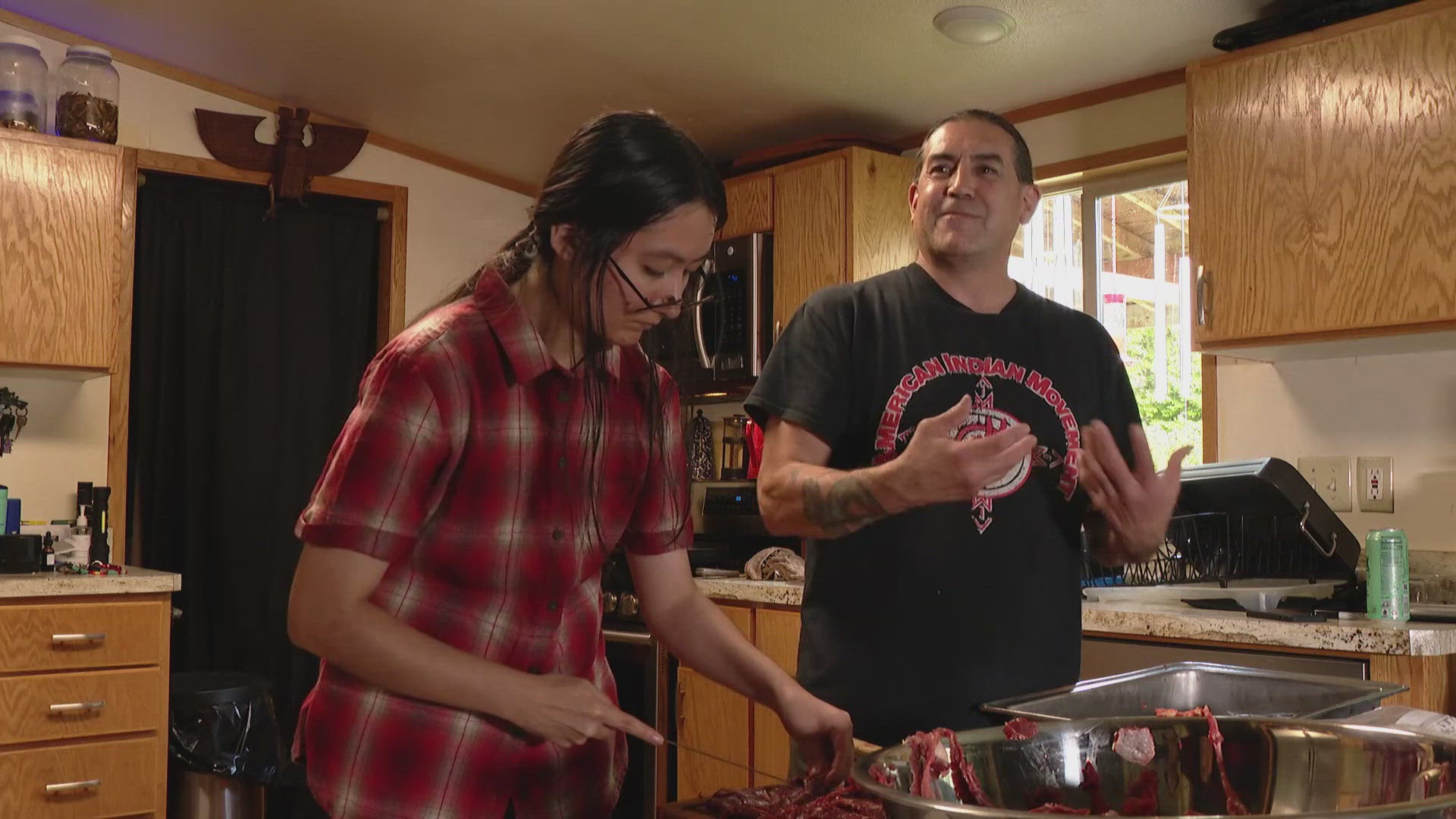USK, Wash. — As the sun rises over Pend Orielle County, near the Idaho border, the Kalispel tribal lands hides in the fog something precious.
A herd of buffalo eye Mark Colson cautiously as he approaches them. The buffalo are majestic, especially in the mist.
"It’s just the spiritual part of it..." Colson trails off, admiring the buffalo. Something triggers the herd and they stampede away from Colson. He watches them pass.
"That's so cool," he whispered.
The buffalo are actually a rare sight in Washington. They aren't native to our state at all, but this herd has roamed Kalispel lands since 1973. The buffalo were transferred over from the Niobrara Preserve in Nebraska to the Kalispel tribe in partnership with the InterTribal Buffalo Council and the Nature Conservancy. The transfer of the herd signified a recognition of Kalispel sovereignty.
Colson, who is Lakota, brought his team from Skokomish to take a buffalo home. Not for personal use, but in preparation for an Indigenous People's Day celebration that he and his partner Ixtli WhiteHawk have been organizing for three years.
Representatives of the Kalispel tribe guided Colson and a few others throughout their ranch, looking for a certain cow (a female buffalo) they had set aside for this occasion. Searching for her was easy. Finding a way to take her down with a rifle while she was hidden away in the herd, was a trickier ordeal.
The team stalked the cow for two hours, before finally, Colson was able to take two shots through a clearing. The cow went down, and the rest of the herd spread away from her. The team quickly approached her, and Colson kneeled beside her head to offer her tobacco. He also smudged her entire body with sage and a lighter from his pocket.
He mouthed a silent prayer as he rested his hand on her head. He later explained the prayer was one of deep gratitude and well-wishes for the cow's spirit.
"I pulled the trigger, but it's all of us," Colson said.
"It's an offering," Ixtli WhiteHawk said, referring to the tobacco that was sprinkled near the cow's head. "The buffalo have a relationship with the people, and taking the shot is a commitment."
All of the buffalo will be used in a ceremony. It is tradition to use the whole buffalo, including its pelt and bones. All of the meat will be made into a feast to feed the community on Indigenous People's Day, at Washington Hall in Seattle.
"Everybody is invited," WhiteHawk said. "It is a day to celebrate, we invite everyone to show up with a good heart, open mind, with a humble way."
Once prayers were finished, Colson's team moved the cow to be processed closer to the ranch. There, they stripped the buffalo of its pelt, and processed it just enough to pack the meat into coolers for transport back to Skokomish, WA.
In Skokomish, over 400 miles away from the Kalispel Tribal lands, WhiteHawk and Colson worked on processing the meat in preparation for Monday's feast. The menu is big. It includes an array of traditional foods but the highlight will be the buffalo stew.
In order to feed all those people, Colson and WhiteHawk's 18-year-old spent the entire weekend dicing, fileting and cubing hundreds of pounds of meat.
WhiteHawk said she is expecting a big turnout for the city's 10th official celebration of Indigenous People's Day.

